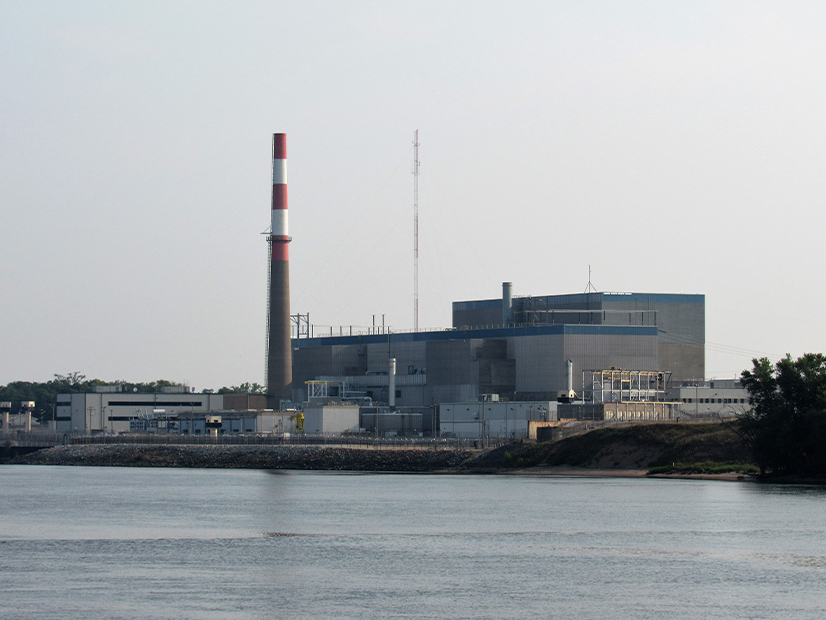
FERC ruled last week that PJM can go to its customers to recover a $140,000 penalty leveled against the RTO this year by ReliabilityFirst, with Commissioner James Danly “reluctantly” concurring but calling for an investigation into PJM’s reliability violations and “manifest failures” to ensure reasonable electricity rates (ER23-2327).
PJM agreed to the penalty as part of a settlement with RF approved by FERC in April over several violations of NERC reliability standards — some at the Quad Cities and Dresden nuclear plants in Illinois, and others stemming from coordination issues at transmission facilities owned by FirstEnergy Utilities (NP23-13). (See PJM Hit With $140K Penalty for NERC Violations.)
According to a guidance order issued by FERC in 2008, RTOs and ISOs may “request recovery of penalty costs by spreading those costs among their members and/or consumers on a case-by-case basis.” Such requests must meet several criteria to be eligible for commission approval, including:
-
- Whether the RTO or ISO involved had a compliance program in place.
- Whether the violations were due to intent or gross neglect.
- Whether management was involved in the violations.
- The ability of the organization to pay the penalty.
- The fairness of the RTO’s or ISO’s proposed assessment mechanism.
On June 30, PJM requested that FERC approve the recovery of the $140,000 RF penalty from its customers. The RTO explained that while it previously would have paid penalties from its administrative cost recovery rates, a change to its tariff in January 2022 meant the rates would no longer be “sufficient to absorb penalty costs.”
PJM claimed its proposed recovery was consistent with the criteria in FERC’s 2008 guidance order, noting that it possesses “a robust internal compliance program,” that all the violations were inadvertent and no harm to the grid resulted, and that management was not involved in the violations. The RTO said its proposal would allow “a broad allocation of the costs,” with a low impact on individual consumers; according to PJM, if recovered in a single month, the resulting additional cost to consumers would be around a fifth of a cent per MWh.
Public Citizen objected to PJM’s request, stating that putting the cost of the penalty on consumers would be “unjust and unreasonable. Instead of recovering the cost from consumers, the consumer advocacy group suggested that “PJM executives and PJM’s Board of Managers should be financially responsible for the penalties.”
This approach would be consistent with a FERC ruling last year against ISO-NE over construction delays at a Boston-area generating plant, Public Citizen said. In that case, ISO-NE agreed to a $500,000 civil penalty that was paid for through a reduction in executive compensation. (See FERC Investigation Faults ISO-NE in Capacity Market Fraud.)
PJM in turn pushed back on this suggestion, pointing out that the 2008 order on cost recovery was not applicable to the ISO-NE violation, which did not concern recovery of a NERC penalty. Furthermore, PJM said, FERC did not require ISO-NE to pay its penalty from executive compensation; the ISO made that decision on its own. The RTO reiterated that its proposed recovery mechanism is valid under the 2008 order and suggested Public Citizen has a problem with the order itself, not with PJM’s use of it.
FERC sided with PJM on the applicability of its 2008 order and said commissioners were “not persuaded” by the arguments of Public Citizen. The commission said that because PJM had “adequately addressed the factors identified by the guidance order,” it would grant the RTO’s request for cost recovery, effective Aug. 30.
But commissioners’ reactions to the decision were mixed, as Danly’s concurrence demonstrated. While the commissioner agreed PJM had “met its relatively light burden” of proof regarding its ability to recover costs, he argued in his filing that not only does the RTO have a history of “undercutting or dismantling core market design principles essential for just and reasonable rates,” the case makes clear that “PJM also is not very good at reliability.”
“I would treat PJM like the public utility that it is and … investigate PJM’s manifest failures to ensure or at least advocate for just and reasonable rates — and now to also investigate whether PJM is complying with existing reliability rules,” Danly said. “The commission should not hesitate to enquire whether a public utility serving as [an RTO] should continue in this critical role when rates and reliability failures suggest it is not doing very well.”
Danly suggested that the commission has authority to conduct such an investigation under Section 206 of the Federal Power Act. Although FERC has not taken this action on its own, Danly pointed out that “any entity with standing” could file a case, and wondered if this would “have more of an effect … than a $140,000 penalty that we pass through to ratepayers.”

